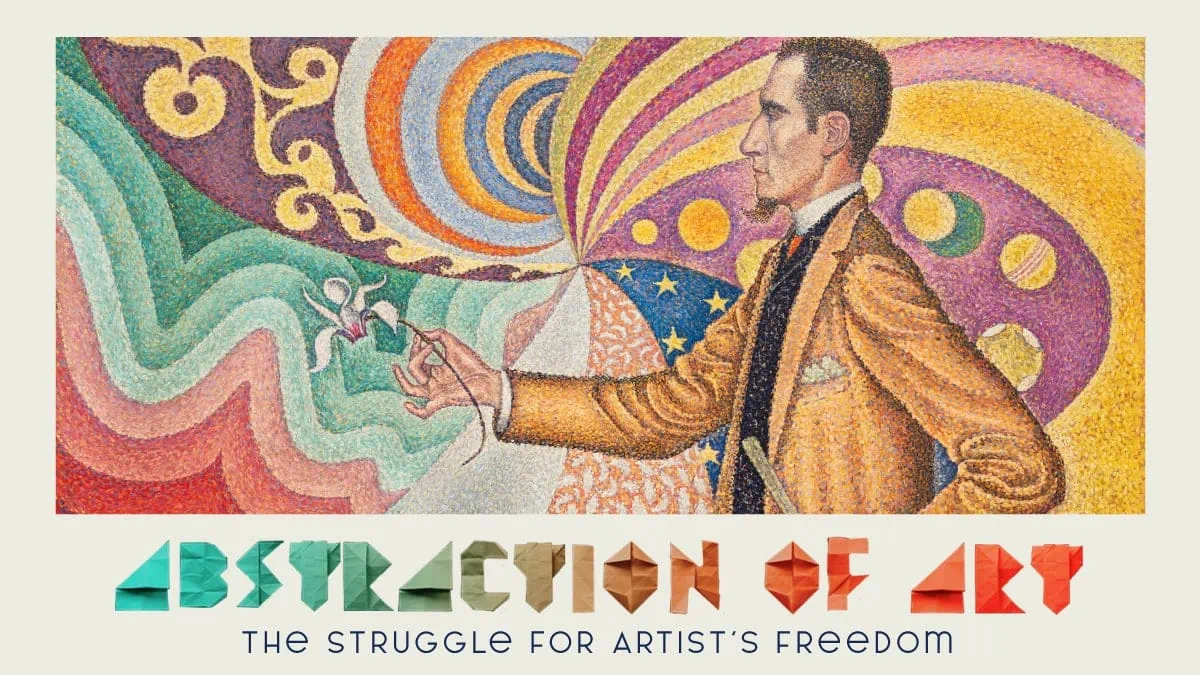Table of contents
- What does Art of Abstraction mean?
- When abstract art first appeared and how it developed?
- The roots of abstract art
- Early 20th Century: Birth of Modern Abstract Art.
- Pre-War Abstraction: Russian and Dutch Movements. (Mid-20th Century)
- Post-War Abstraction: A New Change for Freedom
- Modern Abstraction (Late 20th and early 21st century).
- The Awakening of Modern Art ( 21st Century)
- FAQs
As soon as a person sees something abstract in nature, their brain is bombarded with a million questions about it.
What even is that?
Is that supposed to be on that wall?
Do people even think of it as art?
Rest easy, there has been no mistake. The way the art was created, it was meant to look like that.
To focus more on the meaning behind the painting, rather than the appearance, is what abstraction is all about.
Let the art sit in your mind and let the energy of the artist flow through you.
At the center of this movement is how the viewer interprets the abstract artwork.
To get to where it is today, the art of abstraction that we see in galleries underwent countless battles and movements till it evolved into modern art.
These movements portrayed not only the sentiments of painters but also their skill at giving life to their abstract art.
What does Art of Abstraction mean?
Abstraction in art, at its core, means the freedom of representational qualities in art.
Not bound by the common interpretation of reality, these abstract artists took the liberty of portraying messages in their abstract artworks.
This newfound independence was referred to as “abstraction” in art.
Abstraction in art is not only limited to paintings but is up to the interpretation of the viewer.
This makes it more interesting as the meaning of every brush stroke differs from viewer to viewer.
Can your 5-year-old really paint that?

Let’s be honest, every art newbie who walks up to an abstract painting thinks, “ I could paint that in my sleep.”
But what they don’t understand is that there is a meaning behind every brushstroke on a canvas.
It was intended to be there.
They also overlook the fact that these are professional artists who, if they so choose, can school any other artist on the block.
When abstract art first appeared and how it developed?
The essence of the art of abstraction is present all around us, not only in art but in all walks of our life.
So, to find the exact time of the emergence of that idea is nearly impossible.
Was it even possible to invent a genre of art?
But in 1911, Wassily Kandinsky’s “Indeed” is said to be the pioneer in the art of abstraction.
It’s due to this painting that he is called the “Father of Abstract Art”.

However, it was speculative as later works of Hilma Af Klint predated the works of Kandinsky by several years.
Who knows who really created the first abstract paintings. But the essence of abstraction is found in art all the way back to prehistoric times.
Check Out: Paintings by Kandinsky
The roots of abstract art

Who knew that the best challenger to Wassilly’s claim of abstract paintings would actually be the Neanderthals themselves?
Found to be drawn thousands of years ago, the cave paintings found in the Chauvet caves are the first traces of abstraction in art ever found.
Made by our ancestors during the ice age, they hold crisp representations of bison, mammoths, and human hands.
When they were discovered by us in the later ages, they were described as proof of human presence during those times.
The art of abstraction was lost over the course of time, but it was not recovered until the 19th century, when artists were given complete creative freedom in the creation of their subject matter.
This was due to the fact that art funding came from private sources rather than just the church anymore.

James McNeil Whistler’s Nocturne in Black and Gold was an example of the early rise of abstraction in art.
The main objective of the artist with this painting was to challenge the basis of aesthetic standards of the past.
Asian And Islamic Contributions to early abstraction in art.
The Islamic Manuscripts have done justice to the early adaptations of the concept of abstraction.

Although painting real trees and animals goes against some artistic principles, the use of figurative symbols to animate the already stark landscape is flawless.
Early Chinese artists were also quick to join the abstraction trend on the Asian side of the continent.
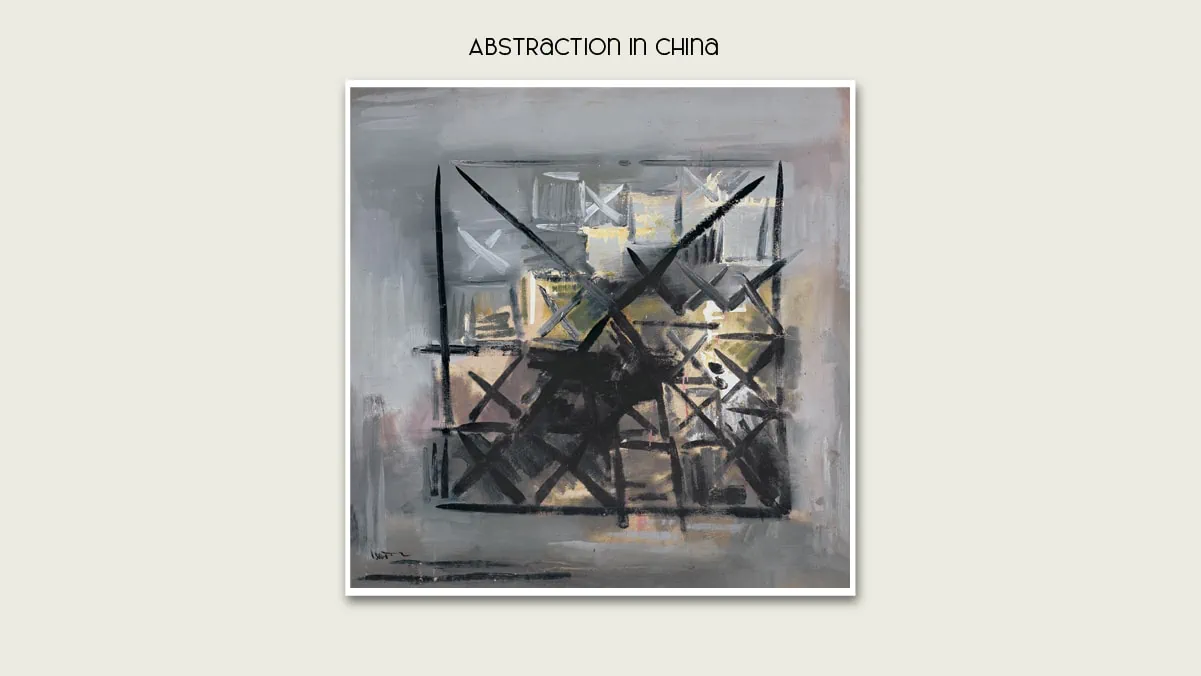
Chinese artists’ use of abstraction had a great effect on China’s socio-political situation during the cultural revolution in the 20th century.
Early 20th Century: Birth of Modern Abstract Art.
The early 20th century marked the beginning of the modern abstract movement as the genre was rediscovered by Wassily Kandisky.
It started out as a genre that aimed to move art away from realism and toward surrealism.
Which inturn inspired artists to not be afraid of expressing themselves nor have their paintings be bound by reality.
This paved the way for a change in the art community, with the new hot topic being the involvement of abstraction in art.
The early era of abstract painting was mostly dominated by famous painters like Joseph Mallord, William Turner, and Henri Matisse.
Cubism in Abstraction.
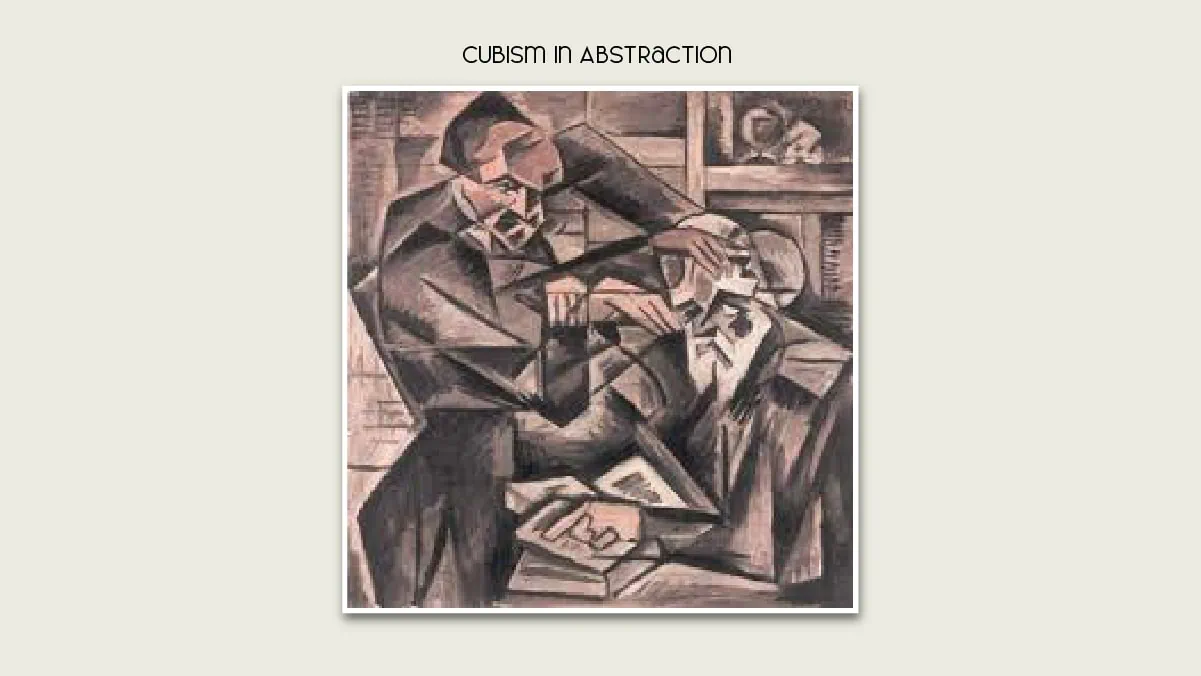
Is Cubism part of Abstract Art? It is a frequent question we ask ourselves.
That’s obvious, of course!
Cubism was a movement that broke up and reattached the subjects of paintings in an abstract form.
It greatly revolutionized music, literature, and architecture in its era.
The movement was pioneered by iconic cubist artists like Pablo Picasso, Georges Braque, and one of the most famous Post Impressionist Artists Paul Cezanne.
The other movements arose as a result of Cubism, which led to its reputation as the most influential movement.
One of the most famous Cubist Abstraction paintings is Les Demoiselles d’Avignon by Picasso.
Because of this new genre of art of abstraction, it received a great number of negative responses from Pablo’s friends and critics.
But later, when the world caught up to Pablo, they began to appreciate the painting as it countered centuries of artistic traditions.
This gave birth to the Cubist movement in art.
Impressionism in Abstraction.

As the world transitioned into the 20th century, movements that had gained popularity among artists started to fade.
Instead, the new era gave birth to unorthodox movements that focused purely on the message the painter wanted to convey.
One such movement was Abstract Impressionism.
It involved artists conversing with each other through the medium of their paintings.
They firmly believed in abandoning objective reality in their paintings and instead going for the abstraction of art to deliver their message.
This movement was spearheaded by famous abstract impressionist artists like Jackson Pollock, Willem De Kooning, Mark Rothko, and Helen Frankenthaler.
Jackson Pollock developed a new method of painting called “Drip Painting,” which was very much frowned upon in the United States.
But despite that, he continued to create his paintings because they supported his support for free speech.
Other artists like Mark Rothko joined in their own methods to abandon traditional methods and support their own way of abstraction of art.
The method in which Rothko portrayed abstraction in the art was said to be the depiction of his inner worlds.
His Entrance to Subway painting marked a whole new concept when it comes to abstract art.
Suggested Read: Paintings by Mark Rothko
Fauvism in Abstraction.

The art movement that was mostly dominated in the early 20th century by the French abstract artists.
Fauvism literally means “wild-beasts” and was named by Louis Vauxcelles in 1905.
This movement involved the use of bold colors, textured brushwork, and vague materialization of subjects.
On its introduction these methods were never seen before in the history of French Art.
Instigated by famous abstract painters like Henri Matisse and Andre Derain, it quickly gained popularity among the art community.
Paintings like Le bonheur de vivre and L’Atelier Rouge by Henri Matisse stood at the top of this movement, inspiring other artists to elevate their style too.
He was one of the most famous abstract artists because of his leadership of the movement.
In the latter stages of the movement, Fauvism started to dwindle down as it received great competition from other movements like Cubism.
One of the greatest Cubist artists, George Baraque, said about the downfall of Fauvism, “You can’t remain forever in a state of paroxysm.”
The movement later started to lose popularity and gave rise to other movements in the late 20th century.
Pre-War Abstraction: Russian and Dutch Movements. (Mid-20th Century)
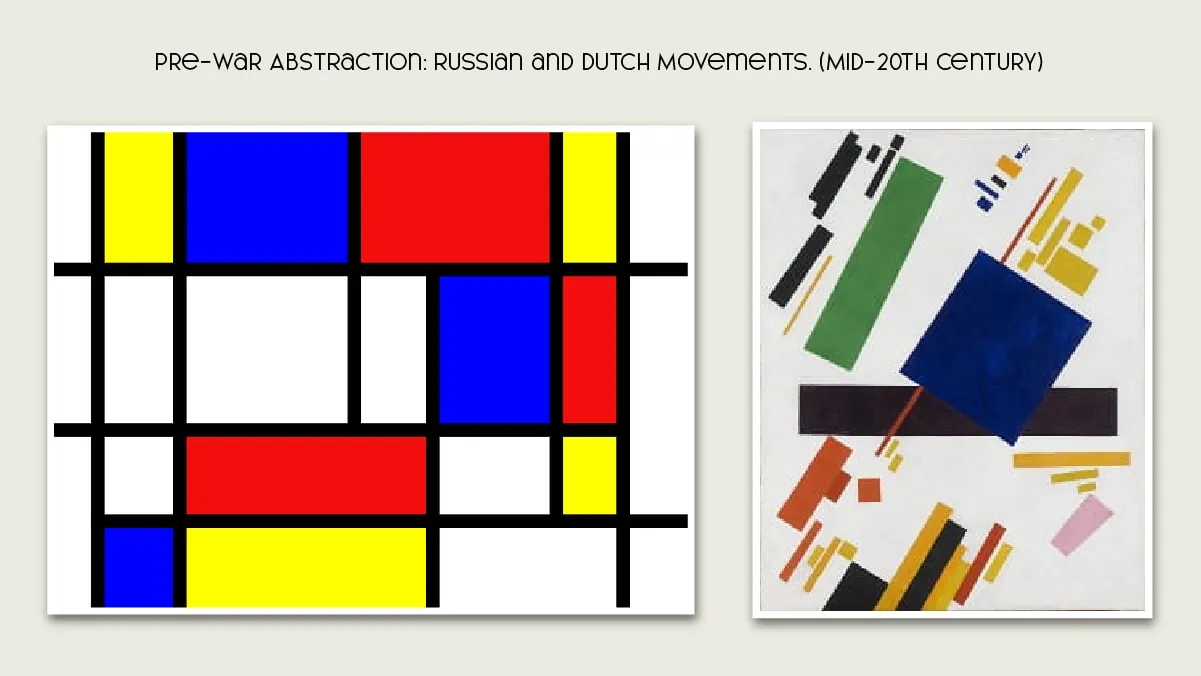
The Russian revolution had just ended, and it had given rise to nationalism all across the Soviet Union.
This ultimately resulted in the rise of new theories, approaches, and strategies for rejecting conventional painting styles and their interpretations.
Whereas in the Dutch, a new era of painting based on surrealism and minimalism was about to take their world by storm.
A new generation of artists was about to emerge that valued the message of the work more than their physical existence.
These artists helped in shaping the basic foundations of modern art.
Suprematism: Russian adaptation of Abstraction.

The Russian movement of Suprematism was led by the famous abstract artist Kazimir Malevich.
He was heavily influenced by the work of Wasiliy Kandinsky.
Suprematism focused mostly on the elementary placement of geometrical forms like lines, shapes, and curves.
The main idea of non-Euclidean geometry or paintings that defy logic is infused with an anti-rational undertone in the suprematist abstraction of art.
The Suprematist’s works are geometrical because Malevich preferred to “return art to geometrical reforms” rather than “copy nature.”
This gave a new element to Russian paintings, which led to the rise of abstract artworks all over the Soviet Union.
De Stijl: A Dutch approach to simplicity.
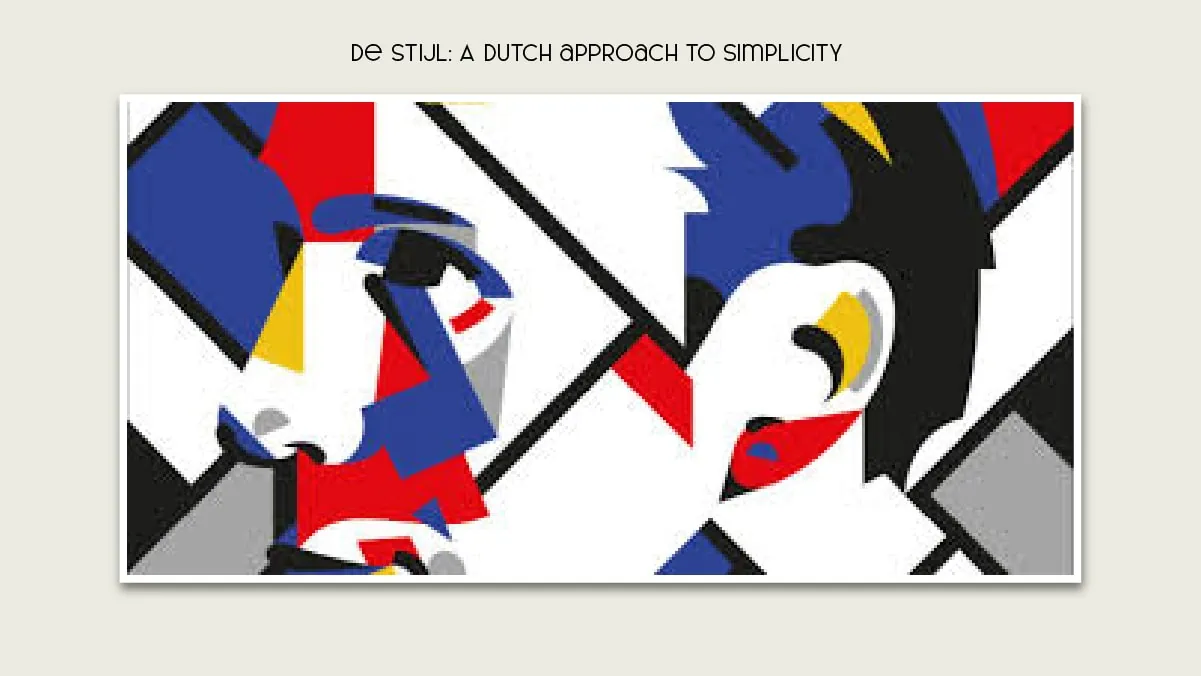
The Dutch were also not far behind in adapting to their own style of abstraction of art.
De Stijl, or “ The Style,” was an art movement that was mainly pioneered by Theo Van Dosegerg in 1917.
The art style mostly consisted of using muted tonal colors like black and white to attract the viewers to the colored meanings that the paintings convey.
Piet Mondrian revolutionized this movement by adding primary colors into the mix, which led him to rename it Neo-Plasticism.
It gave rise to fresh concepts of minimalism in art and greatly advanced architectural art.
Surrealism: A path away from reality

Surrealism was an artistic movement that advocated forsaking the figuration of a painting’s subjects.
It preferred the emotional impact that was provided by the elements of nature.
They rejected the rules of reality and supported the abstract ideologies of artists like Joan Miro and Robert Matta.
This movement experienced great success in its early stages, and many well-known abstract artists accepted and used it themselves.
Until it ultimately grew away from abstraction and leaned more towards figuration, becoming a significant movement unto itself independent of the art of abstraction.
Post-War Abstraction: A New Change for Freedom

After World War II, the focus of art movements shifted from Europe to the States.
New York City has become the new hub for budding artists to find a livelihood.
New ideas also flourished in the suburbs as the artist community continued its growth.
This sparked the emergence of fresh movements that condemned the murder of innocent people, injustices meted out to the populace, and the destruction of priceless works of art.
Additionally, these abstract art movements contributed to the advancement of freedom and peace on a global scale.
Abstraction Expressionism: A Will to Express

As the war left a sour taste in everyone’s mouth, the famous abstract artists took to the canvas to shed light on the absurdity and fragility of the post-war art era.
The movement was mainly focused on conveying the artist’s emotions and feelings through painting.
However, the critics misunderstood the movement by describing it as an embodiment of “pure art,” ignoring the abstract expressionist artists.
In order to lead the movement, well-known artists like Lee Krasner, Helen Frankenthaler, and Joan Mitchell painted enormous abstract portraits on canvas.
This eventually led to the emphasis on the female artists of the movement.
Because of the success this movement received, other famous abstract artists started to improvise on their abstraction of art, leading to the birth of other abstract movements post-war.
Therefore, it is also called the father of postwar abstraction movements.
Abstraction has seen many pioneers in the field of art. One of them was Wassily Kandinsky. He not only revolutionized the art of abstraction but also ended up creating some iconic paintings.
Having an iconic painting on your wall would be a blessing wouldn’t it? Get a Kandinsky reproduction painting from PortraitFlip and elevate your aesthetics.
Action Painting.

Action painting was an expression of rebellion against its culture when it first emerged during the Cold War.
In Action Painting, the artists put their canvas on the floor and dripped paint onto it.
They move all over the place due to the canvas’s size. Hence the name “action painting.”
The term was coined by Harold Rosenberg around 1952.
Harold wanted to connect the new art of action painting with Marxian theory and existential philosophy.
A belief that the painters were more interested in depicting the motion and energy of life on a canvas than they were in presenting illusion scenes, vast landscapes, or lifelike portraits.
Famous abstract artists like Jackson Pollock used Action Painting as a way to advocate for freedom of speech when the United States was grappling with issues of expression.
Because of these issues, he received a lot of praise for his work from other artists who later followed in his footsteps.
Also Read: Paintings by Jackson Pollock
Op-Art: A New Variation of Cubism?

Op-Art, short for Optical Art, was an art movement that first started out as an experiment by artists to mess with illusions and perceptions.
It involved the thorough use of colors to make the abstract art geometric.
This art movement was greatly influenced by Cubism and shares a lot of similarities.
However, it is not Cubism; it has its own personality and methods.
The framework of this art form is purely geometrical and works as a foundation for the subject to entice the viewer.
Due to its popularity, it was quickly adapted into a variety of fields, including architecture and sculpture, due to the popularity it enjoyed among viewers.
Minimalism: Less is more!

Minimalism was born in New York in the 1960’s.
According to its pioneers, it began as a way to detest traditional art, which had become stale and boring.
The painters avoided emotions and symbols in their paintings, but instead focused on the materiality of their works.
What gives the artwork its zing is the bare minimum of subjects, with a naturally occurring absence of elements.
This style of abstract art drawing tries to avoid expressing more than is necessary by using monochromatic colors in an effort to reject reality.
The major artists of this movement were Frank Stella, Dan Flavin, and Sol Lewitt.
Pop Art.

Pop art marked a significant transition from abstraction to modernism and was a breath of fresh air for the art world.
It was created in the suburbs of the United Kingdom and heavily influenced by contemporary popular culture and the media.
The movement was successful in blending the lines between “high” art and “low” art culture by producing works of art that reflected popular culture themes.
Some critics marked the results of the movement as a “high” achieved after World War II.
The movement later changed course and was influenced by Dadaism, which gave rise to consumer culture immediately and paved the way for visual product advertising.
The diverse pop artworks created by famous pop artists like Allen Jones, Ray Johnson, and Roy Lichtstein are what gave rise to the entire movement.
Aside from them, numerous artists, such as Yayoi Kusama, continue to contribute to the movement to this day.
Modern Abstraction (Late 20th and early 21st century).

As the world began to slowly transition into the 21st century, the art movements began to vary with time as well.
In spite of the fact that the world was in chaos and art generally took a backseat due to the threat of the cold war, our artists persisted in moving towards modern art.
Due to these circumstances, a number of artistic movements emerge, ushering in a period of expressionism that promotes peace and harmony.
Postmodernist Abstraction.
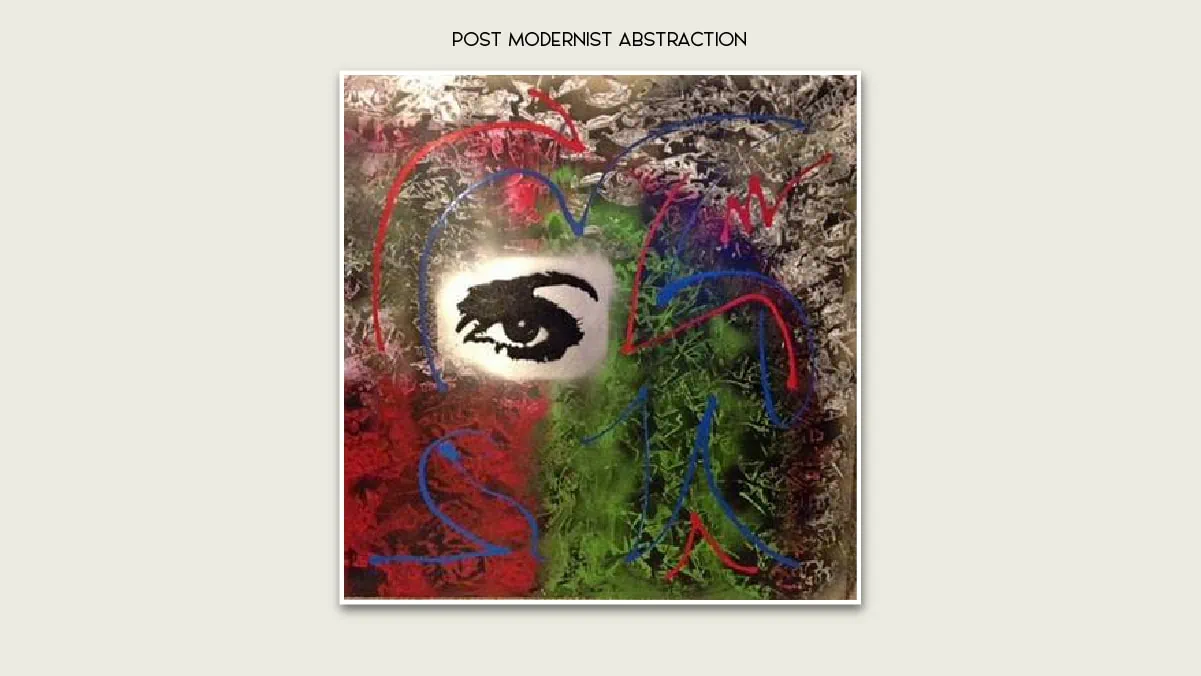
The Postmodernism movement, which was revolutionary in nature, refused to accept the conventional rules of adhering to a single style or authority in their art of abstraction.
As the artists used their art to further the movement, it had an impact on the artists’ self-expression , changing the subject of the painting.
It is also believed that artists do not decide the meaning of their art, but it is up to the viewer.
Even the artist can participate in the activity because each person’s interpretation of the work will be different.
Many famous artists of this movement strived to promote peace with their art and prevent the dangers of another war.
Artists like Don Ed Hardy still engage in the movement today, proving that it hasn’t vanished.
Post-Minimalism.

Site-Specific art, performance art, process art, body art, and various conceptual art tenets are all included in the term “post-minimalism.”
Since it primarily concentrated on placement, architecture, and sculpture rather than paintings, the movement itself was not as artistically rendered as the others.
But it resulted in new artists, who were inspired to get out of the galleries and get involved in showcasing their art in their unnatural environments.
Site-specificity, which was another art form of abstraction, was another result of this connection between art and the surroundings.
As the movement moved off the canvas, it started to make more and more sense in the modern art market, which was booming as the world entered the twenty-first century.
Conceptual Art.
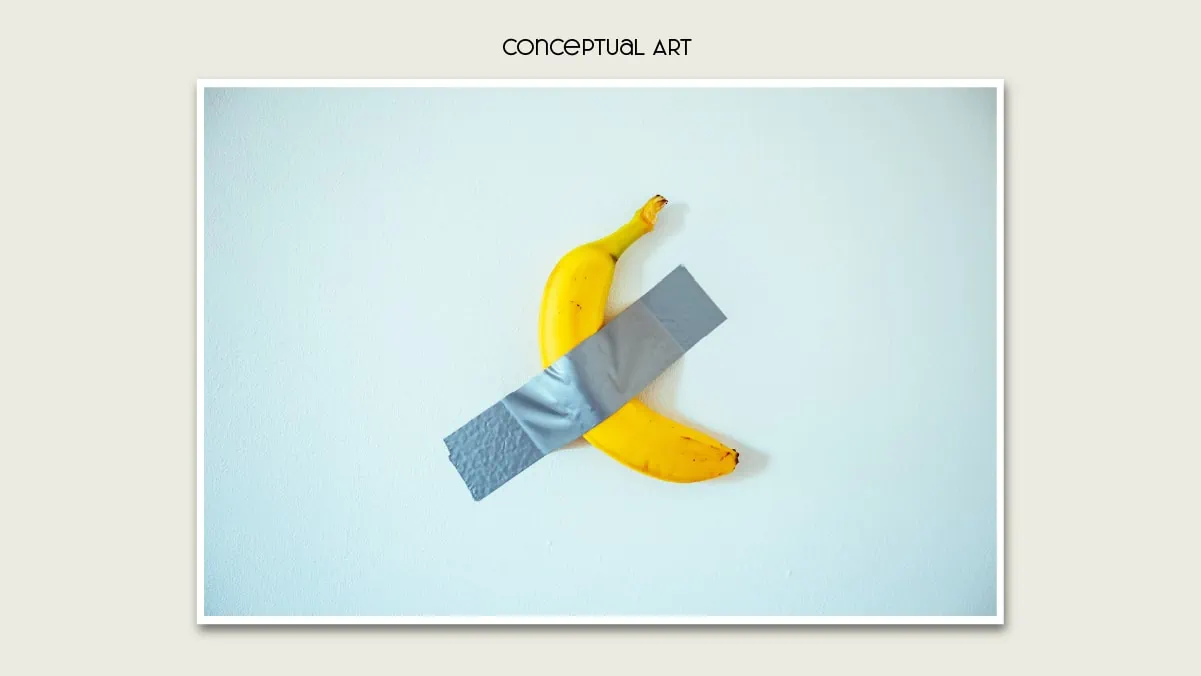
Emerging as the pinnacle of the art of abstraction but existing before the designated date.
In 1917, Marcel Duchamp was recognized as the originator of conceptual art, and his famous abstract work, “Fountain,” is regarded as the first conceptual piece.
Then the movement was again reborn in the 1960’s in South America, then later in Europe and eventually making its way to the States.
The ideology of the movement was to reject the standard ideas of art and evolve the message of art to provide more clarity to the viewer.
In spite of the fact that it drew inspiration from minimalism in many ways, conceptual art rejected the notion that art must take on a physical form or even appear to be art.
The arts that the movement had the most of an impact on were sculpture and architecture.
Concept art movement served to be the foundation on which the current modern art is based.
The Awakening of Modern Art ( 21st Century)
Every art movement that took place in the history of the art of abstraction has led to this day.
Modern art in the 21st century is more about expressing one’s thoughts and beliefs in any way that is possible .
It involves artists going to various lengths to create artworks of various magnitudes and portray their various messages.
The community needed this movement to breathe new life into it because the art world has been neglected as a result of rapid technological advancement.
But despite this, it has persisted, spawning fresh artistic trends that have the power to affect socio-political circumstances and emerge in a variety of contexts to alter the course of history.
Art of abstraction is now the new norm for standards in the art community.
Gone are the days when abstraction was looked down upon by the general audience.
The artist no longer has to reject the conventions of popular art in order for the public to accept his own ideas.
Now it is a respected genre of art that continues to amaze the viewer without any repercussions for the artist.
Similarly, Imagine if you could look at a replica you like for hours on end!
Then order a replica of any famous painting made by one of our professional artists.
Hello Art Readers,
Thank you for reading this article about the Abstraction Movement in art all the way to the end.
Please let us know in the comment section below if you have any additional unique movements or fun facts to share.
Also, don’t forget to follow our Instagram and subscribe to our YouTube channel.
Visit our blog page where we post cool art content regularly.
FAQs
Some of the most famous types of abstraction in art are geometric abstraction, gestural abstraction, and minimalistic abstraction.
The main purpose of abstraction is not to tell a story but to involve the viewer and encourage them to use their imagination and involvement.
Abstract art is the type of art that is based purely on the interpretation of the viewer and abandons the boundaries of reality.
Wassily Kandinsky is known as the father of abstract art as he was the one who coined the term after his painting called “ Indeed”.
Abstract art was a movement that allowed artists to get the freedom to express their feelings without the shackles of reality. This inturn led to various art movements which not only had an impact on the art community but also on the global socio-political conditions.
The first abstract painting style was called Abstract Expressionism, and it believed in the freedom of artists to express themselves through their paintings.

